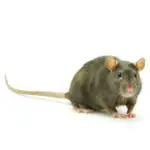How to Detect If Rats Tunnel Underground
While many rodent control experts believe that rats do not tunnel underground, this is not necessarily true. In fact, many species of rats can tunnel underground. Rats’ long bodies make them ideally suited to burrowing. They can squeeze through holes as narrow as one-quarter inch in diameter. Although their tunnels are usually no deeper than 18 inches, they can go much deeper if they think there is food on the other side.
Rats can enter homes through a hole a few inches deep. Rats can also tunnel up to 4 feet underground. The entrance to a rat’s tunnel is usually smooth, and the walls are free of debris and spider webs. Rats can often exit through another opening that is disguised by dirt or other materials.
Rats are very adept at concealment and detecting activity around them. They typically come out of their burrows at night when humans are asleep. If you think that you might be dealing with a rat infestation, consider these tips. The first step is to check for rat holes. These holes can be in the edge of a garage or outbuilding. In addition, make sure you check any gaps or holes in wooden doors. If you have compost bins, they can contain holes as well. You can also look for holes in vegetation. Overgrown vegetation is another common rat attraction. And, don’t forget to check drain covers.
Another way to detect if rats have burrowed underground is to check for the presence of debris in the area. Rats chew through a variety of materials, including wood, brick, and cement. Their ability to chew through these materials makes them a great threat to your home.








